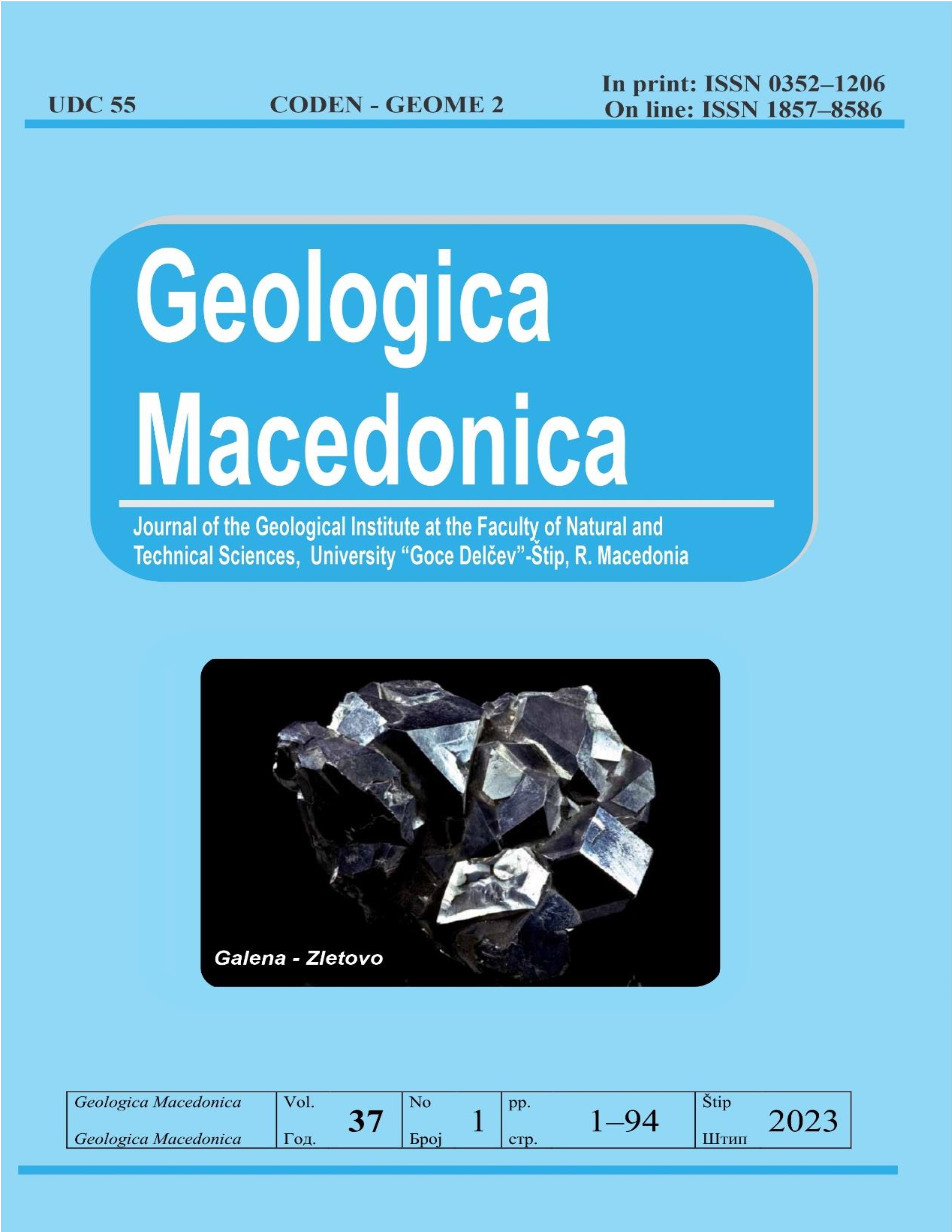SOME IMPORTANT CHARACTERISTICS OF POLYMETALLIC LEAD-ZINC ORE IN HAJVALIA MINE, KOSOVO
DOI:
https://doi.org/10.46763/GEOL23371005dKeywords:
polymetallic sulphide; lead-zinc ore; geochemical association; Hajvalia mineAbstract
In this paper are presented general geological data for the polymetallic Hajvalia deposit. In particular, we have presented the scientific results regarding the chemical and mineralogical composition of sulfur mineralizations from the Hajvalia deposit. The distribution of the main metals used during the mining activity in this deposit has been studied with special emphasis. From the microscopic description of the mineral samples in the Hajvalia deposit, the following mineral compositions result: sphalerite, galena, pyrite, chalcopyrite, marcasite, arsenopyrite, pyrrhotite, tenanntite, as well as non-metallic minerals. The geochemical associations indicate the strong connection of Pb with Zn and Ag, and less with Cd and Cu. There is another association of Sb with Cd in antagonism with Cu, and an association of Bi with Cu in antagonism with As. Electron probe analysis shows that galena is quite pure with sporadic high content of Ag (up to 100 ppm). The Fe content in the sphalerite is quite homogeneous and varies from 9 to 11.5%, or 0.18 Fe atoms in the crystallochemical formula. As is known, the Fe content in sphalerite depends on the temperature of the mineral formation and, in some cases, can be used as a geothermometer. The main characteristic of galenites is their "purity", with a very high content of Pb. Ag stands out among the other elements, as does the presence of Hg, more Sb than Bi. The characteristic is the presence of Te and Se in isomorphism with S, always with a predominance of Te. In contrast to galena, the contents of Ag as well as Se and Te are lower while it is found more often in Bi than Sb.

